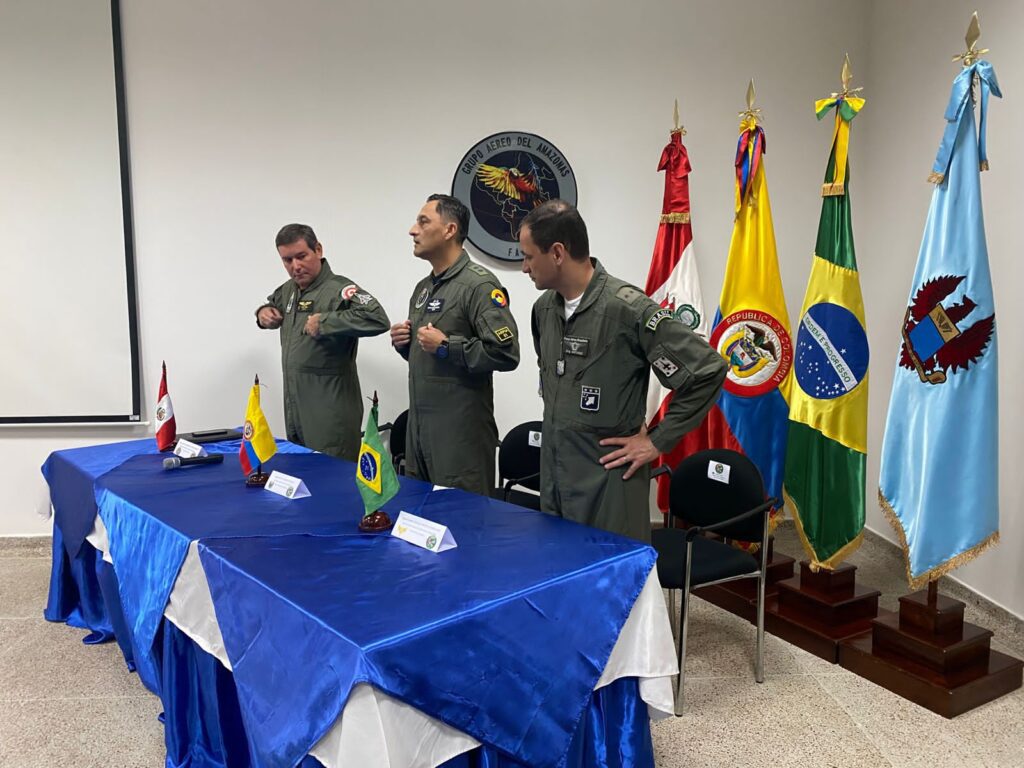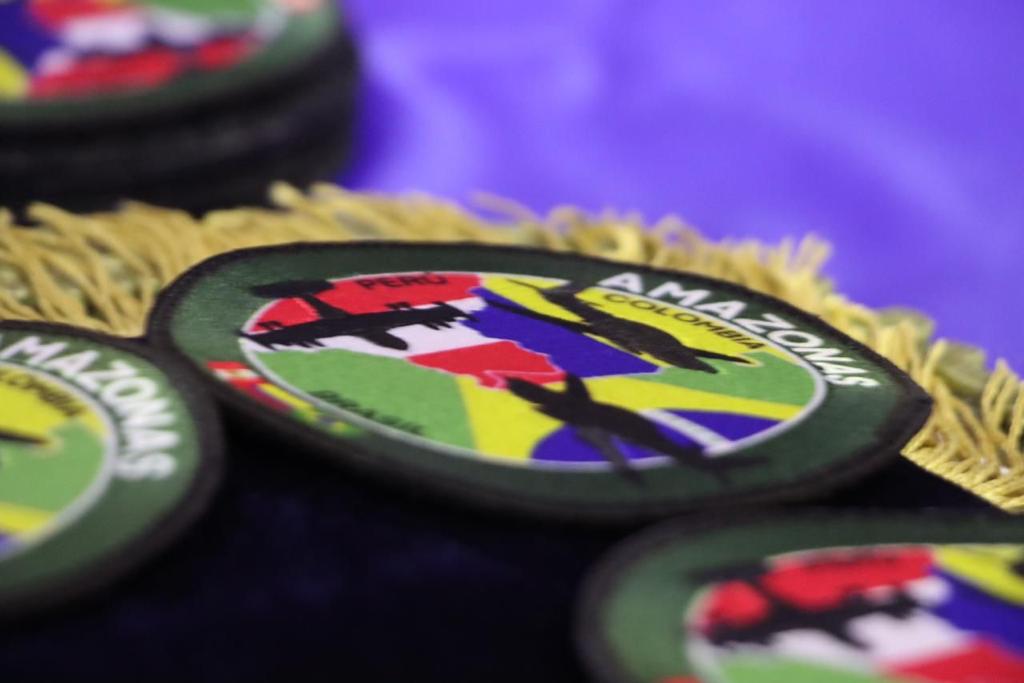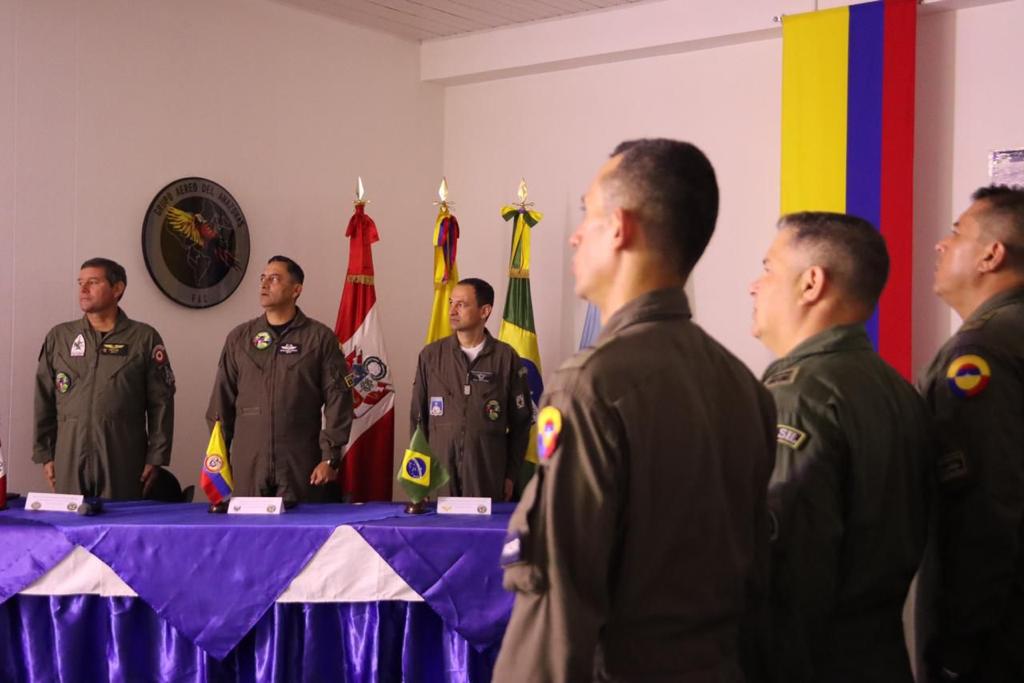Exercise Amazonas 2 takes place in an area favorable to illicit drug trafficking. In addition to the FAB, the Peruvian Air Force and the Colombian Aerospace Force are also participating.
Air Force Agency, by Lieutenant Marize Torres
The Brazilian Air Force (FAB, per its Portuguese acronym), the Colombian Aerospace Force (FAC, per its Portuguese acronym), and the Peruvian Air Force (FAP, per its Portuguese acronym) began Exercise Amazonas II 2023 on Monday, July 31, with the goal of training aircraft crews to intercept aircraft in border regions. Prone to illicit drug trafficking, the border area where the training takes place includes the cities of Tabatinga, located in the Brazilian state of Amazonas, Leticia, located in Colombia, and Iquitos, in Peru.
In this context, the Exercise is based on promoting interoperability between the Air Forces of the three countries involved with the mission of reducing illicit air traffic on their borders. The training is based on scenarios that come as close as possible to the situations commonly encountered in interceptions.

At the official opening of the mission, about 200 military personnel involved gathered in Leticia (CO) for a briefing to receive guidance on tactics, techniques and procedures related to interception. The event was attended by the Chief of FAB’s Joint Air Operations Center (CCOA), Air Brigadier Francisco Bento Antunes Neto, the Commander of Air and Space Operations of the FAC, Air Brigadier Luis René Nieto Rojas, and the Second Commander of the FAP Operations Command, Major General Juan Pablo Tryon Carbone.
Antunes spoke about the main technical and operational benefits of the mission. “Operational Exercise Amazonas II is an important opportunity for the Brazilian Air Force to cooperate with the Colombian Aerospace Force and the Peruvian Air Force in airspace control. It allows these three Forces to execute the combined exercise and coordinate in order to carry out the transfer of illicit traffic that is being identified in their respective countries so that the other country can intercept this aircraft and take the necessary measures to control the airspace. This coordination opportunity is very important for us to increase confidence between the work of the countries involved,” said the General Officer.
The Amazonas II will also allow for a deeper understanding of aircraft interception capabilities among the participating air forces and will serve to train teams of fighter, reconnaissance, rotary and transport aircraft. In addition, the Air Defense training will also be used for Operation Agatha, which already takes place against illicit incursions into national territory.
The FAB aircraft involved in the training are: C-105 Amazonas, C-98 Caravan, C-95 Bandeirante, A-29 Super Tucano, E-99, KC-390 Millennium and H-60 Black Hawk, performing fundamental functions for this type of Operation.
The Aerospace Operations Command (COMAE) is responsible for coordinating, together with all the agencies involved, the administrative, logistical and operational needs of the mission. In addition to this Military Organization, other FAB organizations and units are also involved in the Exercise: Fourth Integrated Air Defense and Air Traffic Control Center (CINDACTA IV), Manaus Air Base (BAMN), Porto Velho Air Base (BAPV), Third Squadron of the First Communications and Control Group (3º/1º GCC), Second Squadron of the Third Aviation Group (2º/3º GAV) and Second Squadron of the Sixth Aviation Group (2º/6º GAV).
The prior planning for the exercise consisted of the preparation of briefings, in which specific information was presented, as well as the flight safety recommendations necessary to fulfill the assigned missions. All this in compliance with the doctrine and Flight Safety standards in force.

Regulations
Decree 5.144, of July 16, 2004, establishes the procedures to be followed with regard to hostile aircraft or aircraft suspected of trafficking in narcotic substances or related drugs, taking into account that these may present a threat to public security. An aircraft is classified as suspicious when it enters the national territory without an approved Flight Plan, coming from regions that are known to be sources of production or distribution of illicit drugs, or when it omits to the air traffic control agencies information necessary for its identification, or does not comply with the determinations of these same agencies, if it is following a route presumably used for the distribution of illicit drugs.
Photos: Colonel Valneck / COMAE and Captain Grace Martínez / FAC
